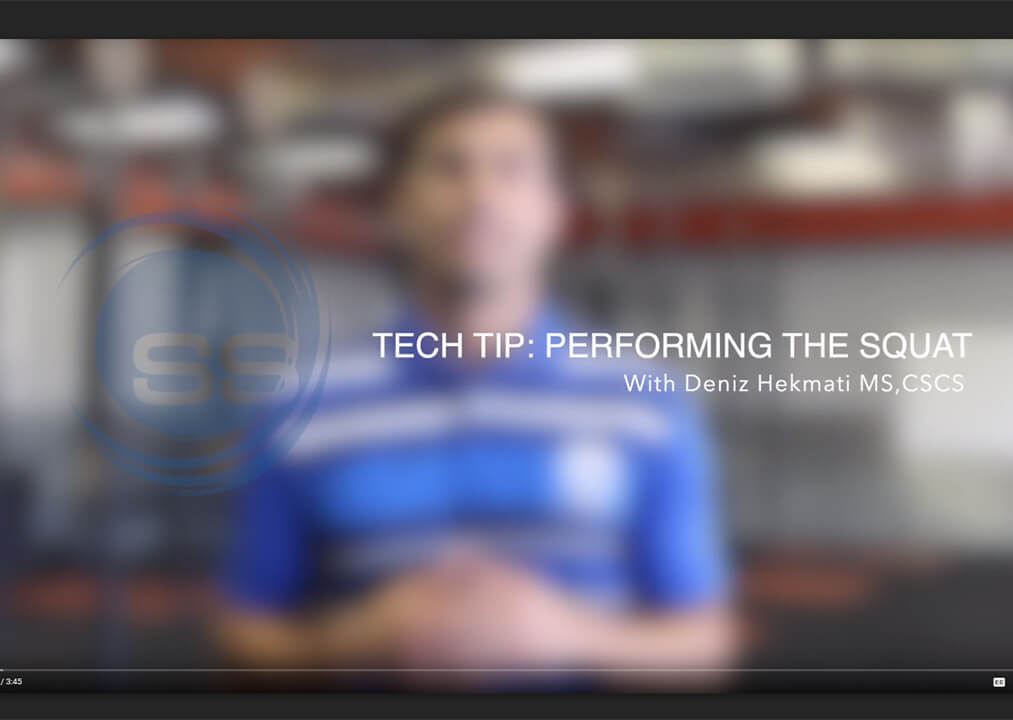Swimmer Strength Tech Tip: Performing the Squat

Contributed by Deniz Hekmati – Strength & Conditioning Specialist, Sport Scientist
Deniz Hekmati will be providing regular content on strength and conditioning as Swimming World’s newest dryland contributor.
Understand that squatting is very unique. Think of it as breastroke – it’s one stroke, but there are many different ways of swimming it, and each swimmer has their unique way of executing it. Squatting is very similar. Depending on the anatomical arrangements in the pelvis, athletes will have slightly different squatting mechanics. Here are the most important things to know:
Watch video
Let’s start with the positioning:
- First, the swimmers need to find their own comfortable and correct squatting position, and then, be as consistent as possible when performing the squat. This has to become second nature.
- The feet are placed about hip width apart, or slightly wider – this does not mean much wider. Toes are pointed straight, or point our up to a recommended 30 degrees – again, each athlete will be unique.
- Always assume a tall stance with back of the neck, glutes, and heels are in one straight line.
- Shoulder blades are not separated to slouch forward, or squeezed together forcefully. They are squeezed back softly to aid in keeping the spine neutral – the heavier the load is, the more important this gets.
- Pressure on the feet should be evenly distributed over the foot. It is important that we think of almost screwing the feet through the ground to keep the knees outward here to generate torque, or power from the hips – this tension should be maintained throughout the squat.
Executing the movement:
- No matter the circumstance, the body weight squat should look very similar to the front and back squat.
- Before officially making a move, we need to incorporate the same bracing mechanics that we went over two weeks ago. The brace increases stiffness around the torso to act as a corset protecting the spine and lower limbs. It will also aid to keep the athlete upright throughout the movement.
- With a well-braced core, flex both from the knees and hips, while driving the knees outside the feet, or the same direction as the toes. We are not dropping down here, rather pulling us downward to maintain tension. Doing this typically exposes weak spots in swimmers, and they tend to shy away from them – so, embrace the tension areas and tackle them!
- We want shins as upright as possible – again, this will depend on the anatomy. The cue: “push on heels” sometimes will allow a beginner squatter to find a more suitable squat position with the hips, especially if they tend to shift forward in a squat – but remember, we want pressure generally in the middle of the feet.
- When hip socket is parallel to the ground, we have an official squat. However, we encourage the allowed full range of motion for all swimmers, especially breaststrokers and IM’ers – if, and only if you are maintaining the same position with the torso as when hips are in line with the knees. If the swimmer is feeling unstable going full range, then be satisfied with hips and knees parallel, but no less.
- At the bottom position of a squat, the athlete is be stable: torso upright and knees driving out – still holding the breath.
- Push through the ground to stand up quickly. Keep screwing the feet outward.
- Remember, the faster you stand, the more powerful the squat is.
- When we see the knees collapsing in, typically the lateral glute and quad muscles are not firing properly – by screwing the feet out, we are allowing the athlete to feel the abductors more. After that, we need to make this kind of squat a habit.
See more videos from Swimmer Strength Coach Deniz Hekmati:
Swimmer Strength Tech Tip: Abdominal Bracing
Swimmer Strength Tech Tip: Strength and Dryland Technique Matters
Swimmer Strength Tech Tip: Age to Start Dryland Training or Strength Training
Swimmer Strength Tech Tip: Squat Problems
For more information, subscribe to the Swimmer Strength newsletter found on our website swimmerstrength.com.
Note: All swimming and dryland training and instruction should be performed under the supervision of a qualified coach or instructor, and in circumstances that ensure the safety of participants.



